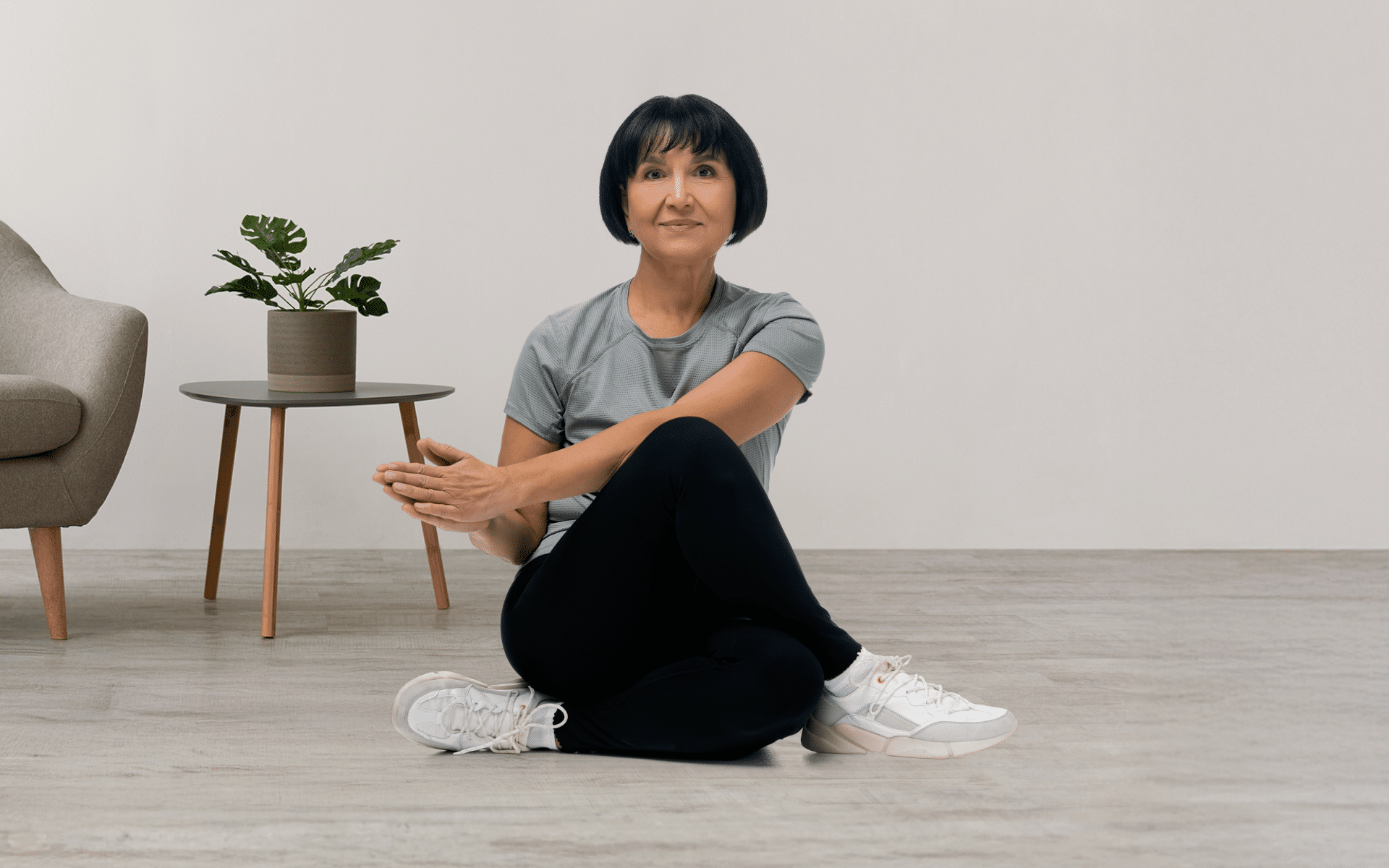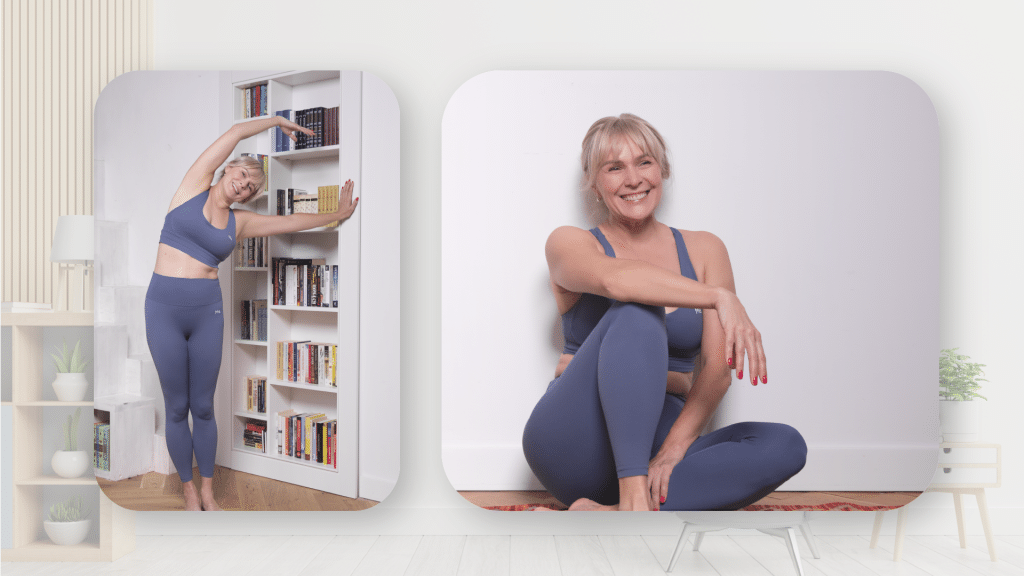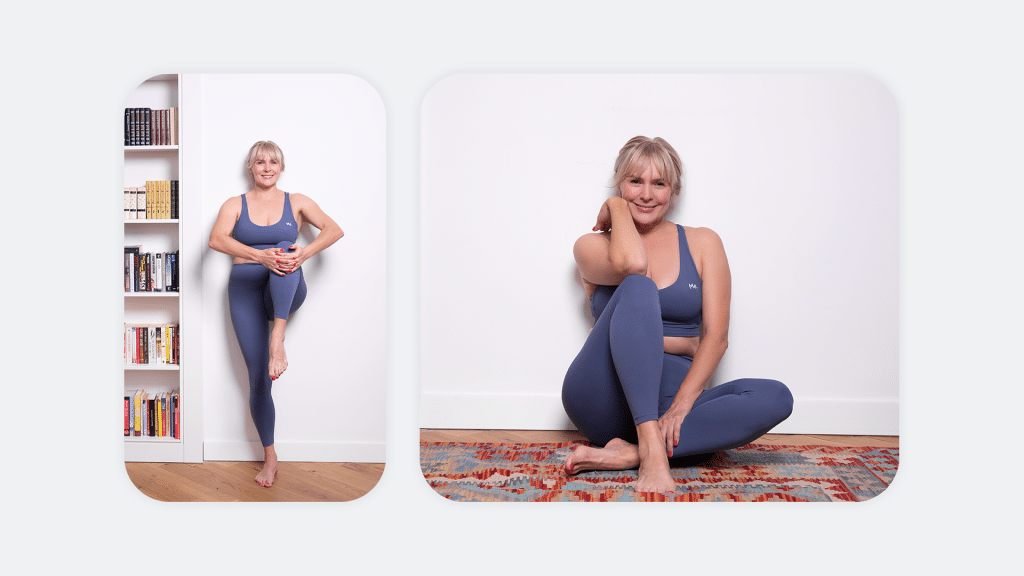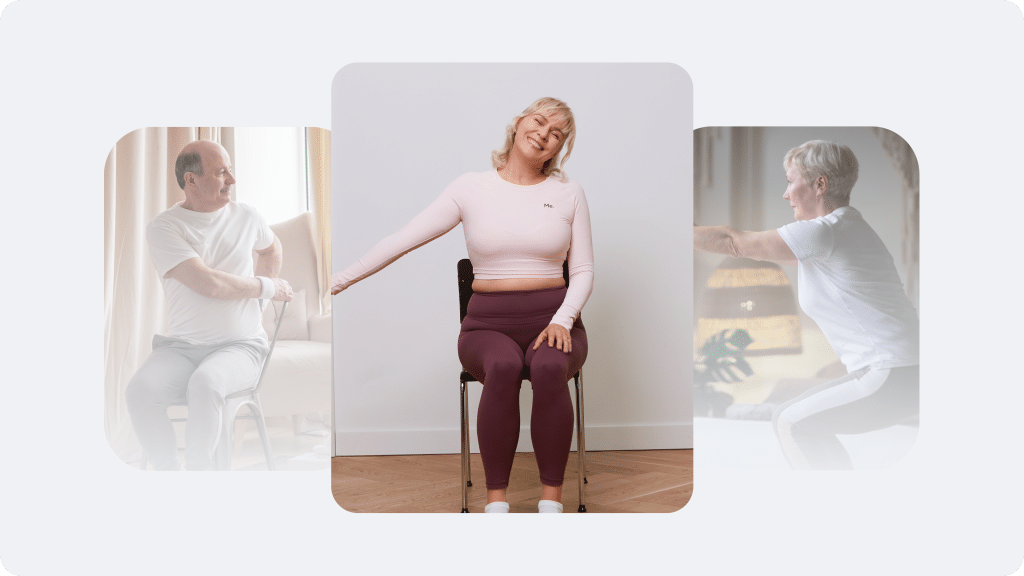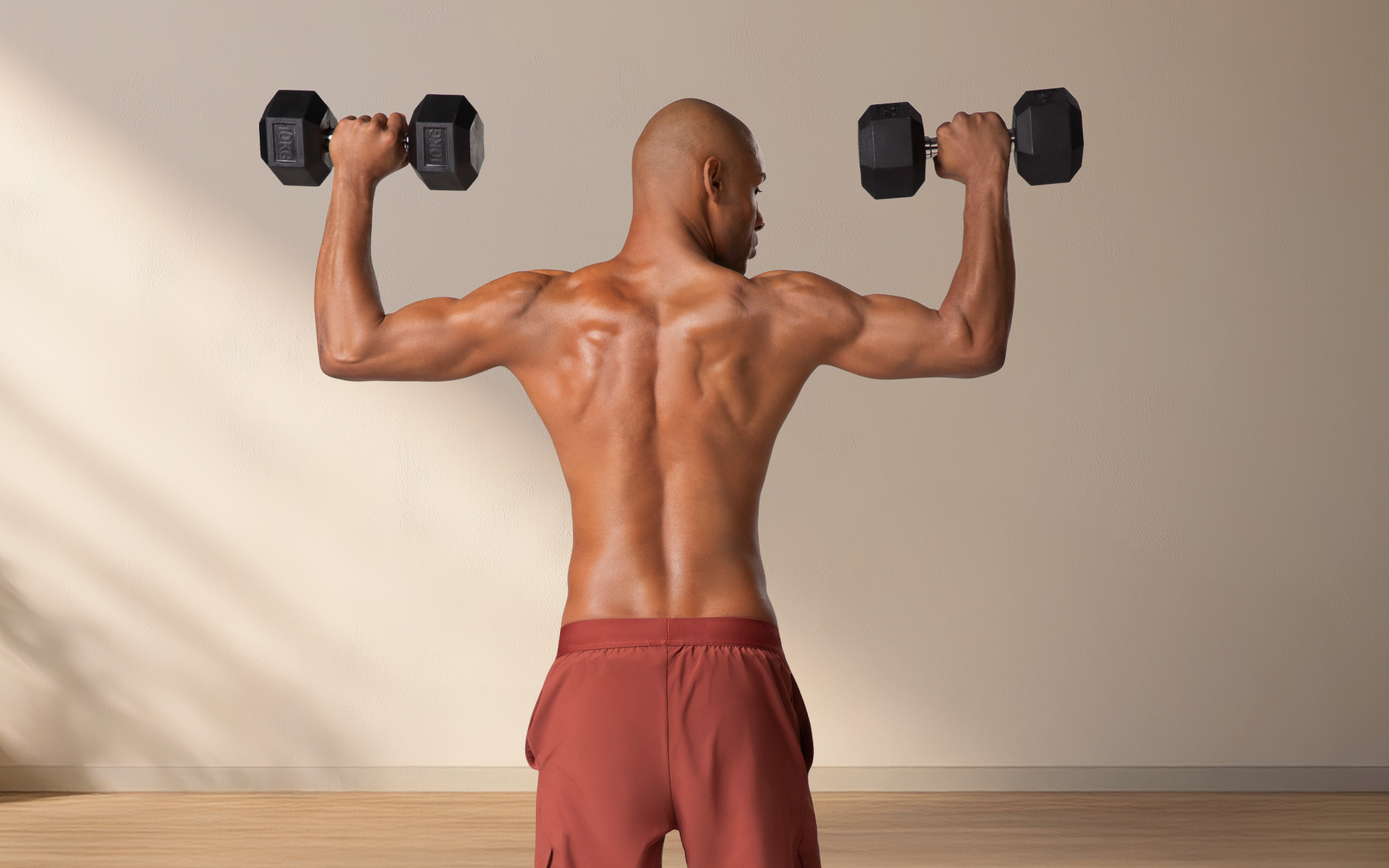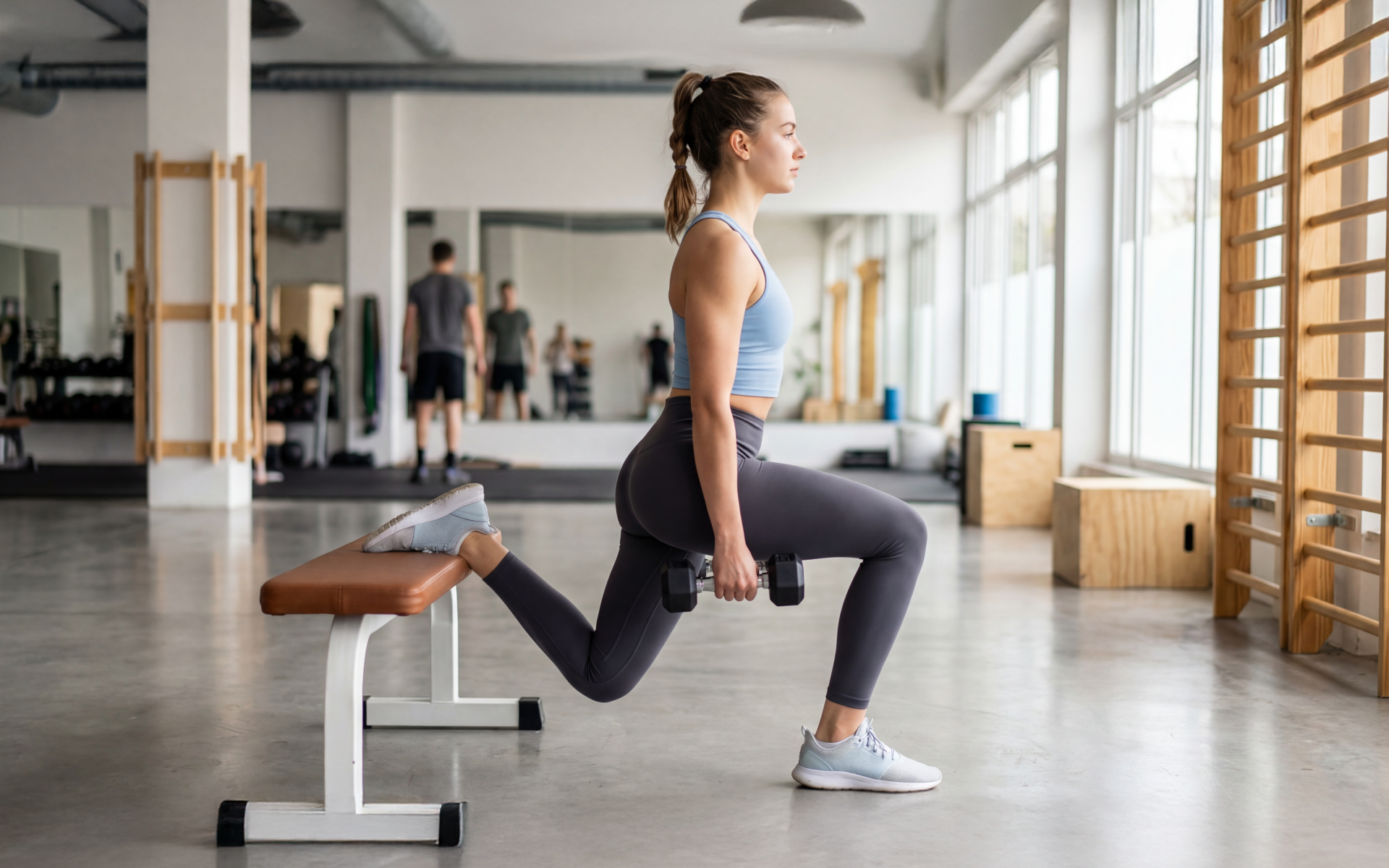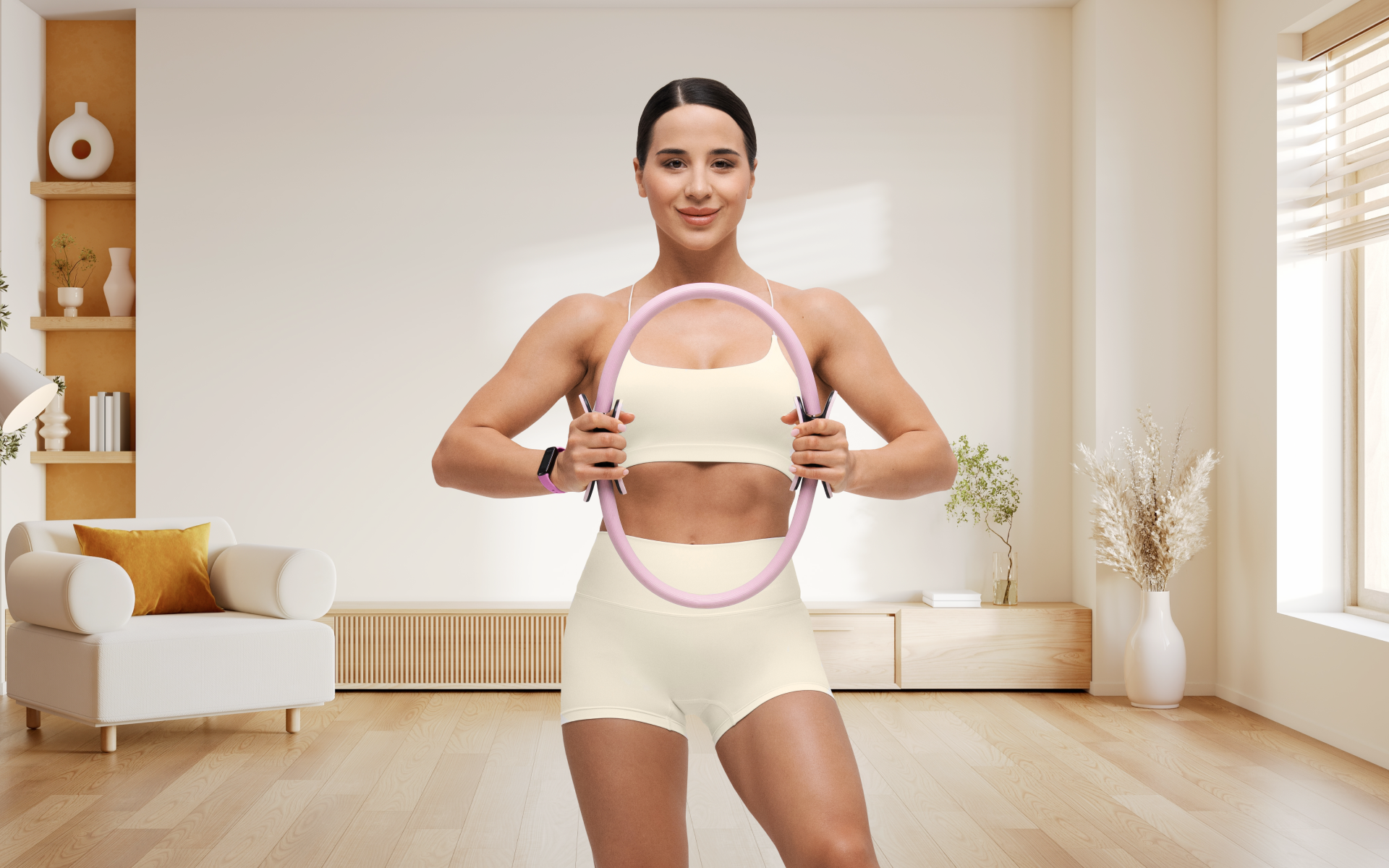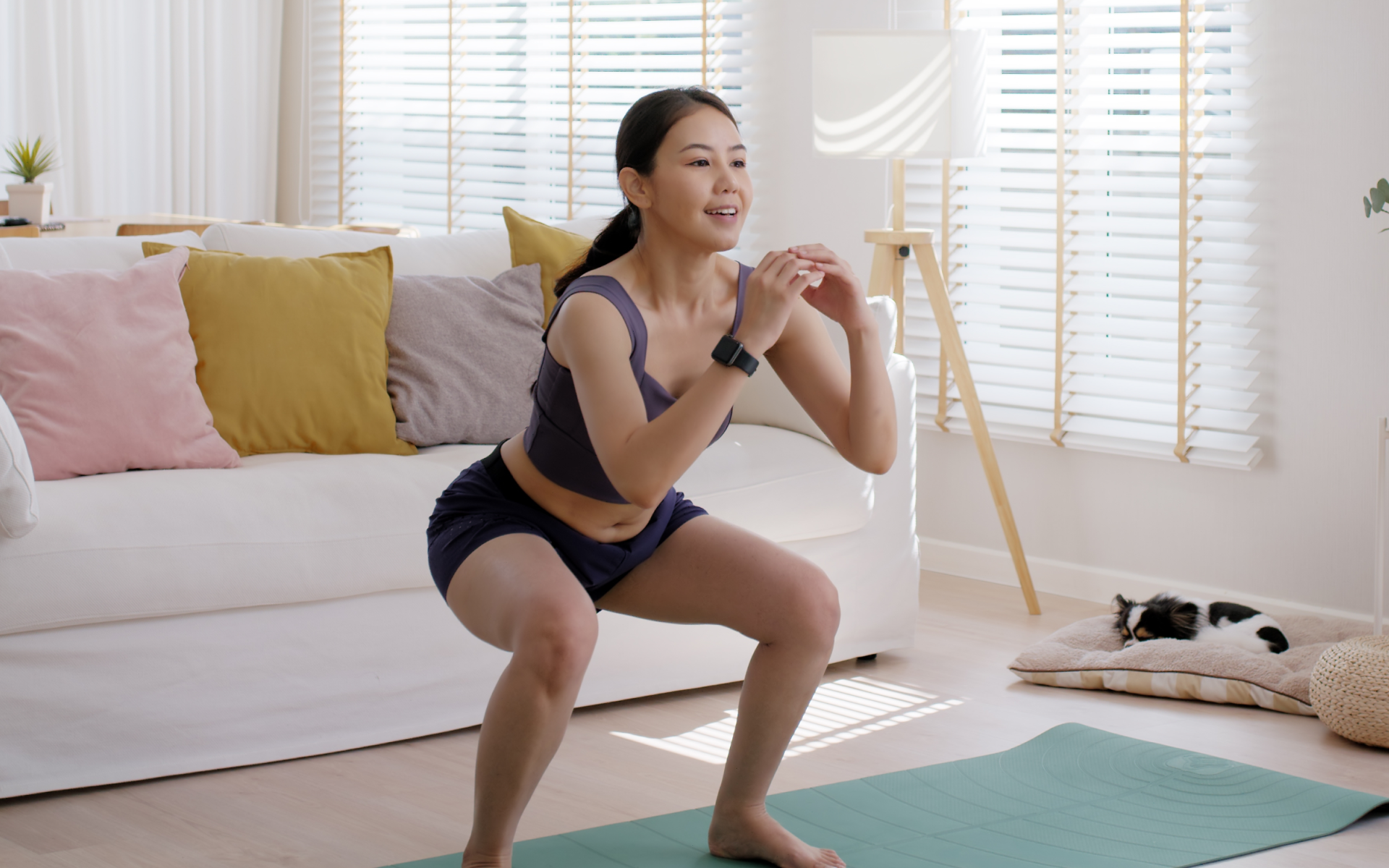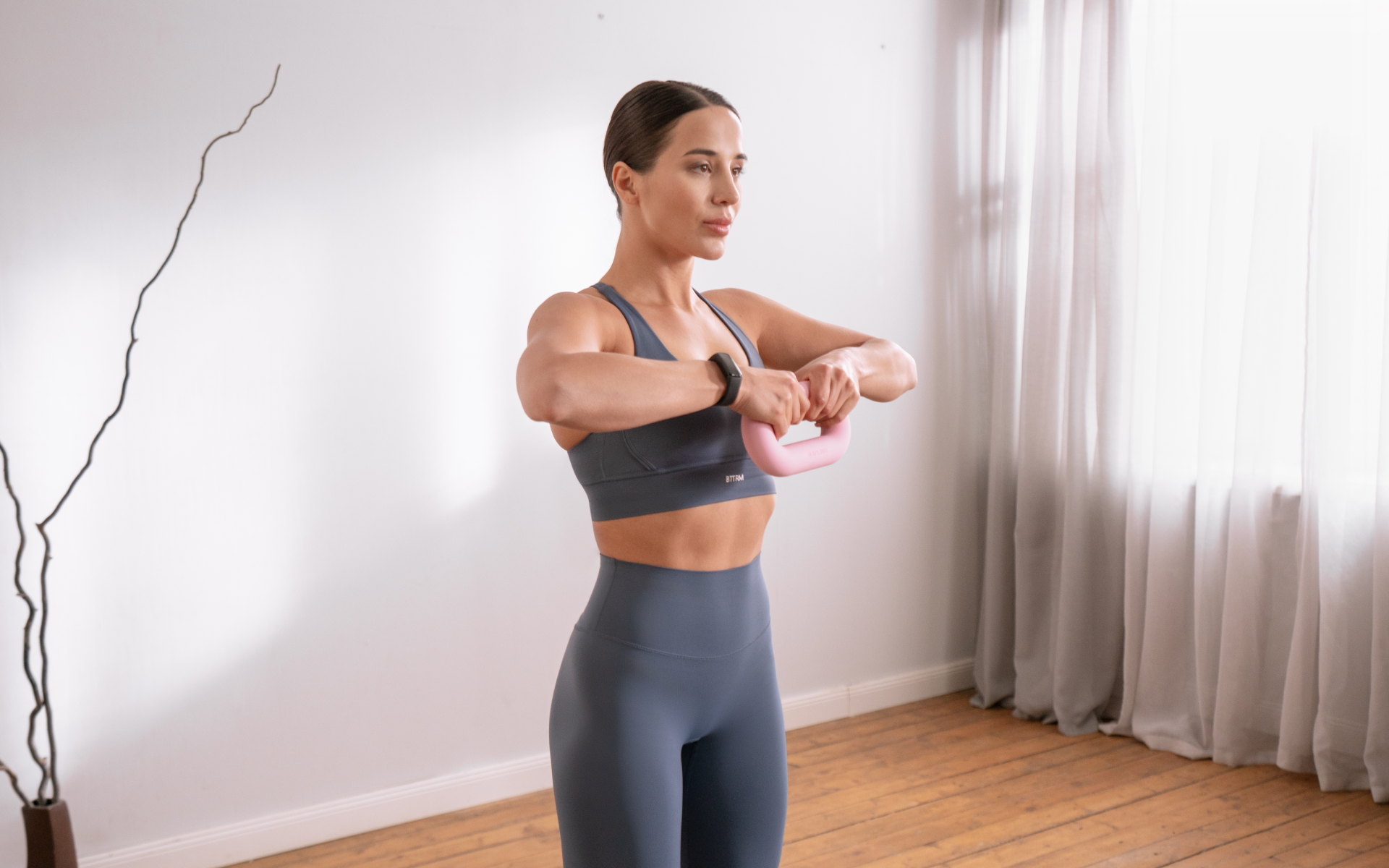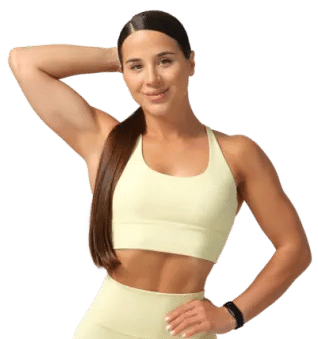Many women, at 50, are on the cusp of middle age. This season of life brings physical changes that may leave some feeling less confident about their bodies.
These changes may affect a woman’s:
- Mood
- The overall quality of life
- Ability to perform daily tasks
However, strength training can help improve your physical strength and well-being.
Strength training, also known as resistance training or weightlifting, involves using the following techniques to build healthy muscular woman strength and endurance:
- Weights (such as dumbbells or resistance bands)
- Various gym equipment
- Bodyweight
While it may initially seem intimidating, strength training has numerous benefits for women over 50.
Here’s what you need to know to get started:
Can A 50 Year Old Woman Still Build Muscle?
A 50 year old woman can still build muscle.
Women who lead an inactive lifestyle tend to lose about 5% of their muscle mass every decade after age 30.
This gradual muscle loss, or sarcopenia, can decrease:
Incorporating strength training into your routine can reverse muscle loss and even increase muscle mass.
The National Strength and Conditioning Association (NSCA) plays a pivotal role in establishing evidence-based guidelines for strength training.
The NSCA emphasizes that strength training’s benefits extend beyond physical fitness, improving:
- Longevity
- Mental health
- Independence in older adults (2)
Other organizations, such as the American College of Sports Medicine (ACSM), echo these recommendations by including strength training in their guidelines for healthy aging (3).
Benefits Of Strength Training For Women Over 50
In addition to building and maintaining muscle mass, many other benefits come with regular strength training:
- Improved Bone Density
Osteoporosis, a condition characterized by weakened bones, becomes more prevalent with age, particularly in postmenopausal women, due to the loss of estrogen, which helps maintain bone strength (4).
Resistance training stimulates bone remodeling by applying stress to the bones, which signals the body to build denser and stronger bones (5).
Studies have shown that consistent strength training can slow bone loss and even increase bone mineral density in older women (3), reducing the risk of more common fractures in this group.
- Enhanced Metabolic Rate
Strength training is crucial in enhancing metabolic rate, a significant benefit for women over 50. Muscle mass tends to decline as we age, a condition called sarcopenia, which can lower resting metabolic rate and contribute to weight gain.
Women can offset this natural decline by maintaining or building muscle through resistance exercises. Muscle tissue is metabolically active, meaning it burns more calories at rest than fat tissue (6).
Research also indicates that strength training:
- Improves insulin sensitivity
- Regulates blood sugar levels
- Reduces the risk of type 2 diabetes (7)
If you wish to free yourself from all the extra pounds that have been weighing you down for way too long, start using the BetterMe: Health Coaching app and overhaul your entire life!
- Better Mental Health
Strength training has profound benefits for mental health (8), making it an excellent practice for women over 50.
Regular exercise releases endorphins, which elevate mood and reduce symptoms of depression and anxiety.
Studies have found that women who engage in strength training report improved self-esteem, better sleep quality, and reduced feelings of stress (9).
Furthermore, strength training can enhance cognitive function by improving blood flow to the brain (10), which is especially vital as age-related cognitive decline becomes a concern. Incorporating this exercise into a weekly routine can provide mental clarity and a sense of accomplishment.
- Increased Longevity
Strength training has associated longevity benefits, making it an essential activity for women over 50 who want to age healthily.
Research has shown that muscle strength is a key indicator of overall health and mortality risk in older adults (11).
Maintaining strength through resistance training supports physical independence.
It allows women to perform daily activities without assistance and reduces the likelihood of falls, one of the leading causes of injury among older adults.
Additionally, researchers found that regular strength exercise lowers levels of inflammation and reduces the risk of chronic diseases like heart disease and cancer (12), both of which are principal causes of mortality in older populations.
- Improved Joint Health And Mobility
Strength training benefits joints by strengthening the muscles around them, providing better support, and reducing strain. This mobility benefit is particularly helpful for women over 50 who may experience joint pain or stiffness due to conditions like arthritis.
Research supports that weight-bearing exercises decrease joint pain and improve range of motion (13).
Strength training enhances mobility and functionality by promoting joint lubrication and stabilizing surrounding muscles. It makes climbing stairs or carrying groceries easier and less painful.
Read more: Beginner Mobility Training Program: 12 Exercises That’ll Improve How You Move Every Day
- Boosted Balance And Reduced Risk Of Falls
Balance often diminishes with age, increasing the risk of falls and related injuries.
Strength training, particularly when incorporating exercises that improve core stability and lower body strength, can significantly enhance balance and coordination in women over 50.
Strengthening the muscles in the legs and core helps maintain posture and stability, directly reducing the likelihood of falls.
Studies show that even simple resistance exercises, like lunges or squats, can aid balance and overall stability in older adults (14).
- Preventing And Managing Chronic Conditions
Strength training is highly effective in preventing and managing various chronic conditions.
Science has proven that strength training can:
- Lower blood pressure
- Improve cholesterol levels
- Enhance cardiovascular health, which is critical as heart disease is the leading cause of death among women (12).
- Promote better blood sugar regulation, aiding in preventing and managing type 2 diabetes.
- Enhance the functioning of the immune system, which may weaken with age. A strong immune system helps the body ward off infections and illnesses.
How Often Should A 50 Year Old Woman Strength Train?
The NSCA advises women over 50 to perform strength training exercises 2-3 times weekly (2). This frequency stimulates muscle growth and improves strength without overloading the body, especially for beginners.
Each session should target all major muscle groups, including the following:
- Legs
- Core
- Back
- Arms
- Chest
- Shoulders
Space out your strength training days to allow muscles to recover, as recovery becomes increasingly important with age.
Is 30 Minutes Of Strength Training Enough For A 50 Year Old Woman?
The key to strength training for women over 50 isn’t solely how long you work out—it’s about your routine’s quality, intensity, and focus.
Thirty minutes of strength training is enough when the routine has a solid structure and aligns with your fitness goals.
Shorter, focused workouts like this offer several advantages:
- Time Efficiency: Busy schedules often make allocating extended periods for exercise difficult. A 30-minute session allows you to reap the benefits of strength training without requiring extensive time.
- Consistency: Consistency is more important than duration. Committing to shorter, manageable workouts increases the likelihood of sticking with a fitness regimen long-term.
- Balanced Fitness Routine: By keeping strength training sessions concise, you can easily incorporate other essential activities, such as walking, yoga, or leisure sports, to create a well-rounded routine.
- Physical And Mental Health: A targeted 30-minute workout enhances physical health, reduces stress, and boosts mental well-being—benefits that become highly significant as we age.
That said, consider the following factors when determining if 30 minutes of strength training is appropriate for you:
Intensity Is Key
The effectiveness of a 30-minute strength training session largely depends on the intensity.
Exercise should challenge your muscles without compromising form.
According to guidelines from the National Strength and Conditioning Association (NSCA), working with weights or resistance that allows for 8–12 repetitions per set—where the last few reps are demanding—can effectively teach you how to build muscle after 50 and boost strength (2).
Frequency Matters
While 30 minutes can be enough for a single session, the overall weekly frequency also plays an important role. Health organizations like the American College of Sports Medicine (ACSM) and the NSCA recommend strength training 2-3 times weekly (2, 3).
This amount ensures consistent muscle stimulation and adequate recovery, which are crucial as our bodies age.
Fitness Goals
Your fitness goals influence whether 30 minutes is sufficient.
A concise 30-minute session can be effective for general health, maintaining muscle mass, and improving bone density.
However, if your goal involves building muscle after 50 or weight loss, you may need to combine this with additional aerobic or resistance-based workouts.
What Is The Best Strength Workout Routine For A 50 Year Old Woman?
This workout routine builds strength, improves muscle tone, and enhances overall health. We designed it with the specific needs and concerns of women over 50.
The routine includes exercises that target all major muscle groups, incorporate flexibility and joint care, and ensure ample recovery time.
Weekly Schedule
- Day 1 (Monday) – Upper Body + Core
- Day 2 (Tuesday) – Lower Body
- Day 3 (Wednesday) – Active Recovery or Rest
- Day 4 (Thursday) – Upper Body + Core
- Day 5 (Friday) – Lower Body
- Day 6 (Saturday) – Flexibility and Balance (Optional Stretch/Care Session)
- Day 7 (Sunday) – Rest
Each workout is about 45 minutes, including warm-up and cool-down periods.
Day 1 & Day 4 (Upper Body + Core)
Warm-Up (5–10 Minutes)
- Light Cardio (e.g., brisk walking or marching in place)
- Dynamic Arm Circles (10 reps in each direction)
- Standing Torso Twists
Main Workout (25–30 Minutes)
Complete 2–3 sets of each exercise.
Rest for 30–60 seconds between sets.
1. Push-Ups (Modified if needed, on knees or wall)
-
- Targets chest, shoulders, and triceps
- Reps: 10–12
2. Bent-Over Dumbbell Rows
-
-
- Targets upper back and biceps
- Reps: 10–12 per arm
-
3. Overhead Dumbbell Shoulder Press
-
- Focuses on shoulders and arms
- Reps: 10–12
4. Bicep Curls with Dumbbells
-
- Builds arm strength
- Reps: 10–12
5. Plank (Knee or Full)
-
- Targets core strength and stability
- Hold for 20–30 seconds, progressing to longer holds
6. Deadbug Exercise
-
- Engages the core while protecting the lower back
- Reps: 8–12 slow, controlled movements per side
7. Cool-Down (5–10 Minutes)
- Seated Forward Fold (Hamstring stretch)
- Cat-Cow Stretch (Gentle spinal movement)
- Child’s Pose (Stretch lower back and shoulders)
BetterMe: Health Coaching app helps you achieve your body goals with ease and efficiency by helping to choose proper meal plans and effective workouts. Start using our app and you will see good results in a short time.
Day 2 & Day 5 (Lower Body)
Warm-Up (5–10 Minutes)
- Light walking or step-ups
- Glute Bridges (10 reps)
- Side Leg Swings (10 reps per leg)
Main Workout (25–30 Minutes)
Complete 2–3 sets of each exercise.
Rest for 30–60 seconds.
1. Bodyweight Squats (or with Dumbbells)
-
- Works quads, glutes, and hamstrings
- Reps: 12–15
2. Lunges (Forward or Backward)
-
- Great for quads, glutes, and balance (Hold onto a chair for support if needed)
- Reps: 8–12 per leg
3. Romanian Deadlifts with Dumbbells
-
- Strengthens hamstrings and glutes while improving flexibility
- Reps: 10–12
4. Step-Ups (Using a Stable Stool or Low Step)
-
- Functional exercise targeting legs and balance
- Reps: 10 per leg
5. Side-Lying Leg Lifts
-
- Strengthens outer thighs and hips
- Reps: 10–12 per leg
6. Standing Calf Raises
-
- Builds ankle strength and stability
- Reps: 12–15
Cool-Down (5–10 Minutes)
- Figure-4 Stretch (Open hips and gluteal muscles)
- Standing Quad Stretch (Pull foot back to stretch front of thighs)
- Hamstring Stretch on a Chair or Step
Day 3 (Wednesday) – Active Recovery Or Rest
Day 6 (Saturday) – Flexibility And Balance (Optional Stretch/Care Session)
Yoga-Inspired Routine (30-Minute Stretch Session):
- Cat-Cow Stretch (Spinal mobility) – 10 rounds
- Downward Dog to Cobra Flow (Stretch and strengthen) – 10 rounds
- Hip Circles (Standing or on all fours) – 10 in each direction per side
- Tree Pose (Balance work) – Hold for 15–30 seconds per leg
Gentle Cool Down Stretch
- Reclined Spine Twist – Hold 10 seconds on each side
- Butterfly Stretch (Hips and inner thighs) – Hold for 20 seconds
- Seated Neck Rolls – 5 slow rolls in each direction
Day 7 (Sunday) – Rest
Key Principles For Success
- Proper Form
Always maintain proper form to avoid injuries.
For example, in squats, control the movement on the way down and avoid buckling your knees inwards.
When lifting weights, engage your core and avoid locking joints. Use a mirror or trainer for guidance.
- Progressive Overload
To continue improving strength, gradually increase the intensity of your workouts:
- Add slightly heavier weights over time.
- Perform an additional set.
- Increase repetitions.
Read more: Chair Yoga Routine for Seniors: 8 Exercises for a Full-Body Workout at Home
- Rest And Recovery
Take at least one full recovery day per week to allow muscles to repair.
Avoid working the same muscle group without at least 48 hours of rest.
Modifications for Joint Pain or Reduced Flexibility
- Use resistance bands instead of dumbbells for low-impact strength exercises.
- Choose seated or supported variations for exercises like squats or planks.
- Swap lunges for step-backs to reduce the strain on knees.
- Stay Hydrated And Listen To Your Body
Proper hydration aids performance and recovery. Stop exercises immediately if you feel pain (beyond normal muscle fatigue).
How Long Does It Take For A 50 Year Old Woman To Get In Shape?
While timelines vary, a 50-year-old woman can start seeing improvements in energy levels and well-being after consistent strength training and fitness efforts within a few weeks.
Noticeable strength and endurance gains may take 1–3 months, while more significant body composition changes often require 6 months or longer.
The time it takes for a 50 year old woman to get in shape varies depending on factors such as:
- Overall commitment to the routine
- Frequency of workouts
- Starting fitness level
- Genetics
It is also important to note that getting in shape does not solely mean losing weight.
It includes building strength, improving muscle tone, increasing flexibility, and enhancing overall health and well-being.
In addition to regular exercise, healthy eating habits are crucial to achieving desired results.
A balanced diet of lean proteins, whole grains, fruits and vegetables, and healthy fats will help the body build lean muscle and burn fat.
There isn’t one exercise that exclusively burns belly fat. Strength training, cardio like HIIT or brisk walking, and a healthy diet are the most effective approaches for reducing overall body fat, including belly fat. Yes, pilates can be considered a form of strength training for 50 year old woman at home or the gym. The practice focuses on core strength, stability, and muscle endurance using body weight or light resistance. However, it may not build muscle as effectively as traditional weightlifting or resistance exercises. The best time to exercise depends on personal preference and daily schedule. For some, morning workouts boost energy and set the tone for the day, while others prefer evenings when their muscles are more warmed up. Consistency is key, regardless of timing. Yes, walking can help burn belly fat with a calorie-controlled diet. Brisk walking increases calorie burn and improves overall fat loss, which can reduce belly fat over time.Frequently Asked Questions
What exercise burns the most belly fat for female over 50?
Is pilates considered strength training?
What is the best time to exercise for a 50 year old woman?
Does walking burn belly fat?
The Bottom Line
Strength training for women over 50 provides advantages beyond physical fitness. It is a holistic approach to maintaining health, independence, and quality of life.
Women can unlock these benefits by incorporating weight—or resistance-based exercises into their weekly routines and enjoy healthy, active aging.
DISCLAIMER:
This article is intended for general informational purposes only and does not serve to address individual circumstances. It is not a substitute for professional advice or help and should not be relied on for making any kind of decision-making. Any action taken as a direct or indirect result of the information in this article is entirely at your own risk and is your sole responsibility.
BetterMe, its content staff, and its medical advisors accept no responsibility for inaccuracies, errors, misstatements, inconsistencies, or omissions and specifically disclaim any liability, loss or risk, personal, professional or otherwise, which may be incurred as a consequence, directly or indirectly, of the use and/or application of any content.
You should always seek the advice of your physician or other qualified health provider with any questions you may have regarding a medical condition or your specific situation. Never disregard professional medical advice or delay seeking it because of BetterMe content. If you suspect or think you may have a medical emergency, call your doctor.
SOURCES:
- Sarcopenia (2023, womenshealth.gov)
- Resistance Training for Older Adults: Position Statement From the National Strength and Conditioning Association (2019, nsca.com)
- ACSM Information On Resistance Training for Health and Fitness (2011, prescriptiontogetactive.com)
- The Effect of Postmenopausal Estrogen Therapy on Bone Density in Elderly Women (1993, nejm.org)
- Effects of Resistance Exercise on Bone Health (2018, e-enm.org)
- Increasing muscle mass to improve metabolism (2013, nih.gov)
- Strength Training Increases Insulin-Mediated Glucose Uptake, GLUT4 Content, and Insulin Signaling in Skeletal Muscle in Patients With Type 2 Diabetes (2004, diabetesjournals.org)
- Resistance Training Improves Mental Health (2010, unm.edu)
- Strength Training Improves Body Image and Physical Activity Behaviors Among Midlife and Older Rural Women (2015, nih.gov)
- Effects of Resistance Exercise Training on Cognitive Function and Physical Performance in Cognitive Frailty: A Randomized Controlled Trial (2018, nih.gov)
- Muscle Mass Index as a Predictor of Longevity in Older-Adults (2015, nih.gov)
- Use strength training to help ward off chronic disease (2022, havard.edu)
- The effects of resistance training on muscle strength, joint pain, and hand function in individuals with hand osteoarthritis: a systematic review and meta-analysis (2017, arthritis-research.biomedcentral.com)
- Strength Training to Prevent Falls in Older Adults: A Systematic Review with Meta-Analysis of Randomized Controlled Trials (2021, mdpi.com)
